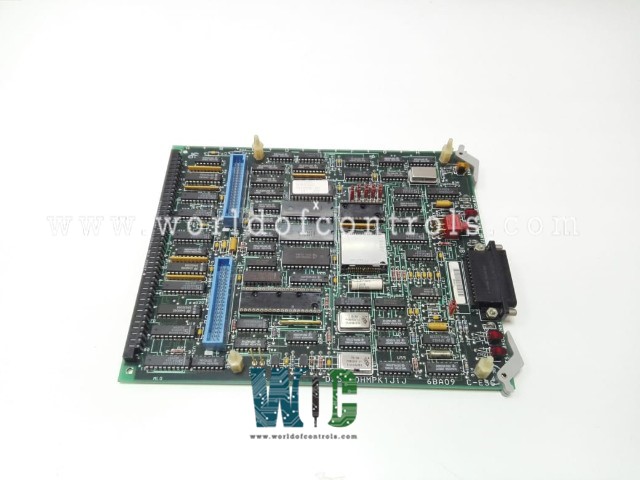
World Of Controls understands the criticality of your requirement and works towards reducing the lead time as much as possible.
DS3800HMPK1K1K - High Multiplexer Board is available in stock which ships the same day.
DS3800HMPK1K1K - High Multiplexer Board comes in UNUSED as well as REBUILT condition.
To avail our best deals for DS3800HMPK1K1K - High Multiplexer Board, contact us and we will get back to you within 24 hours.
SPECIFICATIONS:
Part Number: DS3800HMPK1K1K
Manufacturer: General Electric
Series: Mark IV
Product Type: High Multiplexer Board
Analog output current: 0-20 mA
Power Requirements: +5 V dc
Operating temperature: -30 to + 65 C
Size: 17.8 cm wide x 33.02 cm
Repair: 3-7 Day
Availability: In Stock
Country of Origin: United States
FUNCTIONAL DESCRIPTION
DS3800HMPK1K1K is a High Multiplexer Board manufactured and designed by General Electric as part of the Mark IV Series used in GE Speedtronic Gas Turbine Control Systems. A High Multiplexer Board is an essential electronic component used in systems where multiple input signals need to be managed and routed to a single output line. By efficiently selecting one signal from many, controlled by a set of selection or control lines, These boards simplify data processing within complex systems. Frequently used in communication systems, data routing, and signal processing, High Multiplexer Boards are built to manage a large number of input signals, making them well-suited for applications where multiple data streams need to be efficiently handled by a single processor or device. Depending on the specific requirements, these boards can accommodate various signal types, whether analog or digital and can be integrated into larger systems to enhance performance and reduce the need for additional processing power.
FUNCTIONS:
WOC has the largest stock of OEM replacement parts for GE Speedtronic Gas Turbine Control Systems. We can also repair your faulty boards and supply unused and rebuilt boards backed up with a warranty. Our team of experts is available round the clock to support your OEM needs. Our team of experts at WOC is happy to assist you with any of your automation requirements. For pricing and availability on parts and repairs, kindly contact our team by phone or email.
What are the benefits of using a High Multiplexer Board?
The main benefits include efficient signal management, reduced hardware costs, simplified system design, optimized resource usage, and improved system performance. By consolidating multiple signals into a single line, the board minimizes the need for additional processing units and enhances overall system efficiency.
How do you choose the right High Multiplexer Board for your needs?
Choosing the right board depends on factors such as the number of input signals, the type of signals (analog or digital), speed requirements, and system compatibility. Consider the specific needs of your application, including the number of channels and the control mechanisms required, to select the appropriate multiplexer board.
What types of signals can a High Multiplexer Board handle?
High Multiplexer Boards can handle various types of signals, including analog and digital signals. The type of signals they can process depends on the specific design and specifications of the board. Be sure to check the board's specifications to ensure compatibility with your signal types